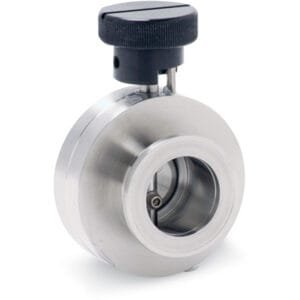The ISO flange, commonly referred to as Large ISO, is a vital component for high-vacuum (HV) chamber ports. TFM’s ISO250 HV Flanges are expertly engineered to provide durable and reliable performance in demanding vacuum environments.
Flange Styles Available:
- ISO-K: Uses clamp fasteners for quick and efficient assembly.
- ISO-F: Secured with nut and bolt fasteners for a robust, dependable connection.
Compatibility with Mixed Joints:
ISO250 HV Flanges offer flexible connection solutions, allowing joints between ISO-K and ISO-F styles using a variety of bolt and clamp options.
Design and Seal Characteristics:
The design principles of ISO flanges mirror those of KF seals:
- Each flange face is counter-bored or grooved to hold a metal centering ring with an elastomeric o-ring around its outer diameter.
- The centering ring ensures precise alignment and secures the o-ring for consistent, leak-free sealing.
Application Parameters:
- Temperature Range: ~0°C to 120–180°C, depending on the o-ring material properties.
- Pressure Range: Atmosphere to ~10⁻⁸ torr or mbar.
TFM’s ISO250 HV Flanges are built to meet the high standards of modern vacuum systems. For standard or custom solutions tailored to your specific needs, reach out to us today!




Reviews
There are no reviews yet.